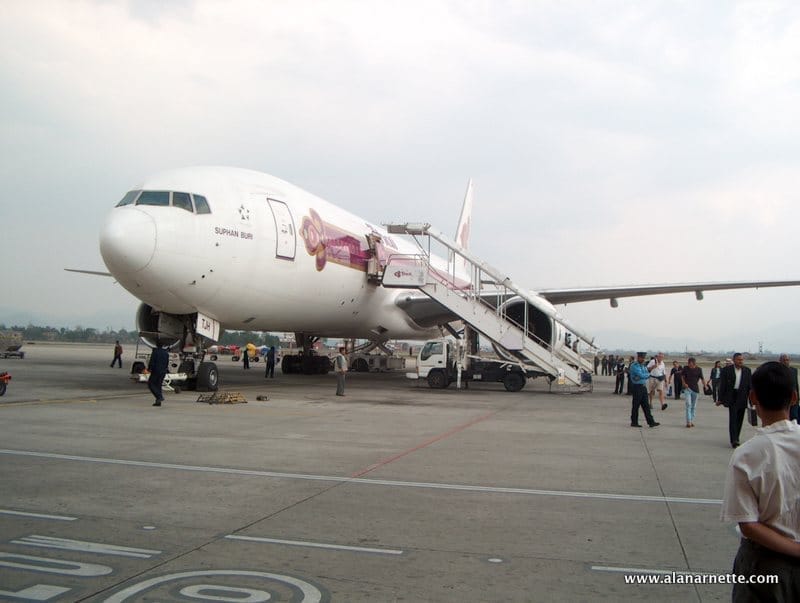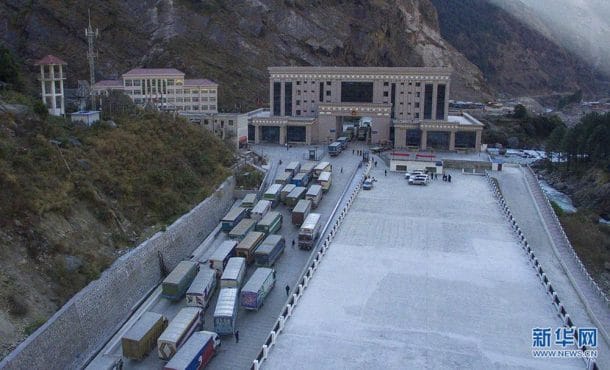Right on time, climbers and trekkers from around the world are arriving in Kathmandu. Some have already flown to Lukla to begin their trek to Everest Base Camp.
I say this every year – if you ever get the chance to trek in Nepal, or the Khumbu especially, jump on the chance. I promise you it will change your life. My first visit was in 1997 for a trek to Everest Base Camp (EBC) via the Goyko Lakes. I was captivated by the people of Nepal, the Sherpa culture, the villages, teahouses, monasteries, monks, yaks, the pizza 🙂 … well you see what I mean. I returned home with new sense of the world and how we might possibly could get along. Thankfully I have returned to Nepal 13 times since then.
International Mount Guides, aka IMG, has checked in from Kathmandu with their usual large team. Between their Sherpa lead team and the Western guided team, I expect IMG to have over 30 members. They usually have the largest team but recently, Seven Summits Treks who has been aggressive with offering low cost climbs (as low as $20K compared to IMG’s $45K) has easily hosted over 60, or even 100 members in a single season.
IMG will acclimatize on Lobuche East at 6,119 m (20,075 ft) to eliminate one rotation through the Icefall. They still have their members sleep at Camps 1, 2 and 3 with at least two rotations before going for the summit. Himalayan Experience aka Himex does something similar.

Another variation on acclimatizing before climbs is shown by Tim Mosedale who takes his climbers on a three-week trek instead of arriving at EBC then going through the Icefall or using Lobuche. Still, Tim has his climbers do a couple of rotations.
Guy Cotter of Adventure Consultants is guiding one private member who is said to be attempting Everest, Lhotse and Nuptse this season. While this has been done, it is quite rare. Kenton Cool was the last to get all three in a single season in 2013.
The teams climbing from the Tibet side usually arrive in Kathmandu, or Lhasa, in early April. Since they drive to base camp, it is shorter but they still spend a few nights along the way for acclimatization.
EverestER is already up and running. This valuable medical service is staffed by volunteers and offers medical services for foreigners for $100 for the season. All Sherpas, porters and locals are treated free of charge. They posted last week that they have already treated 50 patients and had one helicopter evacuation for HAPE.
Expect Another Big Year and Deaths
In 2017 there were 648 summits, 237 from Tibet and 411 from Nepal including 11 climbers who didn’t use supplemental oxygen. There were 6 deaths. I expect about the same number on both sides this year. Some climbers will be using their 2014 permits. Nepal extended those for five years to 2019 after a Sherpa strike closed that side of the mountain. But the 2015 permits that were extended for two years after the earthquake closed Everest have now expired. Expiring permits were one factor in the 2017 season with 166 people using permit extensions.
If the weather holds, there could be over 200 summits from the Tibet side and over 400 from the Nepal side. Sadly I believe 6 to 8 people will die on Everest this spring, mostly on the Nepal side from inexperienced climbers climbing with unqualified guides. This has been the pattern the past few years. Also, I expect to see record frostbite and helicopter “rescues” since the helicopter services are now controlled by Nepali guide companies and they make a significant profit from the insurance coverage of climbers and trekkers.
South or North for Safety?
Of the 8,306 summits through 2017, only 265 climbers used a “non-standard” route in other words, not the South Col – Southeast Ridge or North Col – Northeast Ridge. There were 80 deaths on these routes. This is 28% of the total deaths and a death rate of 2.12. The remaining deaths break out for the Northeast Ridge (Tibet) as 71 or a death rate of .96 and for the Southeast Ridge (Nepal) as 137 – a death rate of 1.11.
Clearly, this shows climbing from the south side is more dangerous than from the north.
| ROUTE | DEATHS | RATE | % |
| Non-Standard | 80 | 2.12 | 28% |
| South Col – Southeast Ridge | 137 | 1.11 | 44% |
| North Col – Northeast Ridge | 71 | 0.96 | 25% |
| 288 | 1.24 |
Here We Go!
I have begun to create my annual team location table and tracking climber’s blogs (see sidebar). If you have a team not listed, please let me know and I will add them if I can track them. If you prefer not to be mentioned, please contact me.
Anyone can sign up for (and cancel) notifications on the lower right sidebar or check the site frequently.
Climb On!
Alan
Memories are Everything





9 thoughts on “Everest 2018: Climbers Say Hello to Kathmandu”
Looking forward to this season.
I know I’ve posted a few critical comments in the past, but I still can’t help myself from following your updates through April and May each year. Thanks for all the work you do; I know a few people on the mountain this year, and it’s always nice to see some familiar names and hear how they’re going. I hope your leg is on the mend, and that you’re able to get back to the big mountains soon!
Welcome Back!
Excited to watch the progress of British TV presenter Ben Fogle and British Olympic cycling gold medalist Victoria Pendleton, climbing to raise money for the British Red Cross. Kenton Cool leading them. Can you provide updates on this aswell please? Thanks a lot!!
Great Video Alan like the reports from you looking forward to another year and hoping no deaths to Sherpas or westerners
You bet!
great video!
It’s started the blogg whoooo. Keeps me going on the night shift working in the North Sea. Followed for the last 5 years and can’t wait for another fantasic account of the climbing season.
Well done Alan and keep on going
Glad I can help you stay awake 🙂 🙂
Comments are closed.